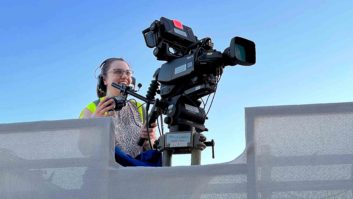Christian Scheck is head of marketing content at Lawo

Increasingly, broadcasters and production crews expect the infrastructure they purchase to work out of the box. Once they have decided on what is best-of-breed for a given task, the product doing the job is considered little more than a piece of a much larger puzzle. This has been facilitated by broadcast control systems—which, by the way, are not only used in broadcast—that abstract the proprietary user interfaces of the various devices, replacing them with a customisable UI for all tasks in control rooms, studios and beyond. The growing number of wide-area networks and distributed production scenarios obviously requires a control system that is able to orchestrate all devices anywhere in the world.
Such a system furthermore needs to be able to adapt to radical workflow overhauls and new technological approaches, which brings us to a second consideration: although some vendors are rumoured to be working on it, there is as yet no one-size-fits-all blueprint that can just be implemented to make a new customer happy. Tweaks to a roughly standardised solution will remain necessary for some time to come. The question some developer teams are grappling with is to what extent the control system’s building blocks can be preconfigured to work equally well under vastly different circumstances.
Mindset Shift
A control system as such is unable to provide a definitive answer to all the functional requirements content producers may have. An IP environment is built on hardware and software that needs to be visible to all devices on the network. Before the release of management software such as HOME, this used to involve assigning hundreds or even thousands of IP addresses manually, eating up lots of time. A clever discovery and registration routine has simplified this process is a device that announces itself as it is connected to the network, and with the press of an ‘admit’ button, is assigned an IP address and able to interact with other devices.
Additionally, the management system needs to allow operators to set parameters on stageboxes and other devices that may be thousands of miles away and to route streams among them effectively, i.e. by allowing the user to select a bunch of inputs in one go and connect them to the equivalent number of outputs.
Of course, the ability to speak to a vendor’s R&D team directly is even better for customers, although it requires a lot of manpower on the vendor’s part and is therefore tricky to provide across the board. Luckily, a lot of requests in this area not only elevate a particular solution but usually find their way into the products by means of subsequent software updates. In this way, a vendor with an open mindset automatically works in close collaboration with all its customers, and the community at large stands to benefit from the tweaks performed following a single issue.
Platform
While allowing customers, who may very well be system integrators, to use the infrastructure almost out of the box is an important service that sets a vendor apart. An even bolder idea is to provide them with a platform that can be used in the most agile way imaginable. It started with the intention of abandoning bespoke hardware, replacing it with COTS servers able to run any app-based processing functionality, whether video or audio, at the required time and with the matching specs. Apps that are not needed can be stopped to free up the CPU or GPU processing power for other tasks. This is embraced by a rapidly growing number of operators.
An even cleverer concept hinges on finding a way of combining hardware devices with apps in a way that allows operators to solicit the required processing functionality either from an app or from its hardware equivalent, depending on the remaining processing capacity. With no noticeable difference between the two from the user’s point of view, such an overarching platform causes the hardware and software worlds to converge, providing a comprehensive platform for anything operators need to create compelling content and respond quickly to unexpected production jobs. Again, the physical location of the proprietary hardware or standard server is of no consequence.
Ideally, the platform also allows to unlock add-on processing functionality on hardware devices, under a unified monetisation system that leaves ample room for creative workflow tweaks without breaking the bank.
Power To The People
The service customers are waiting for hinges on the availability of experts for consultation rounds and handling everything that cannot yet be provided by the platform. In an ideal situation, customers explain what they need and the vendor provides them with a solution that ticks all boxes.
Present-day and future infrastructures should be similar to cars: everybody can drive and enjoy them, with no need to know how to tune or fix them. In our example, however, the car’s design and specs could change several times a day to be just perfect for every occasion.







